These are uncertain days for the Volunteer Park Conservatory. Not only does the community need to find a way to pay for the ongoing operation of the facility, but there are also millions of dollars in repairs necessary to complete the restoration of the 100-year-old structure. Why would the community decide to make this investment — because the VPC is one of the oldest cultural institutions in Seattle, and is stands as a monument to the most pioneering building form in modern architecture, the greenhouse.
The Historic & Scientific Heritage of the Greenhouse
Located in the Olmsted-designed Volunteer Park, the Conservatory is a Capitol Hill nexus to many of the cultural, technological, and scientific endeavors and achievements of the 18th and 19th centuries. Building the Future, a history of modern building technologies written by Ulrich Pfammatter in 2008, provided a foundation from which I came to a better understanding of the VPC’s place in architectural history. Pfammatter’s book is chronologically organized into 100 case studies, covering works from the early pioneers of iron bridge construction to the latest technological feats of Norman Foster, Renzo Piano, and Arup, among many others. The book begins, however, with the predecessor building type to these famous architects and engineers contemporary achievements: the humble greenhouse.
Essentially pioneered in England, and to some extent France, the greenhouse is an interesting case study in itself, with the one in Volunteer Park being a fine early 20th century example of this 19th century harbinger of unprecedented change in how all modern buildings are conceived of and constructed.
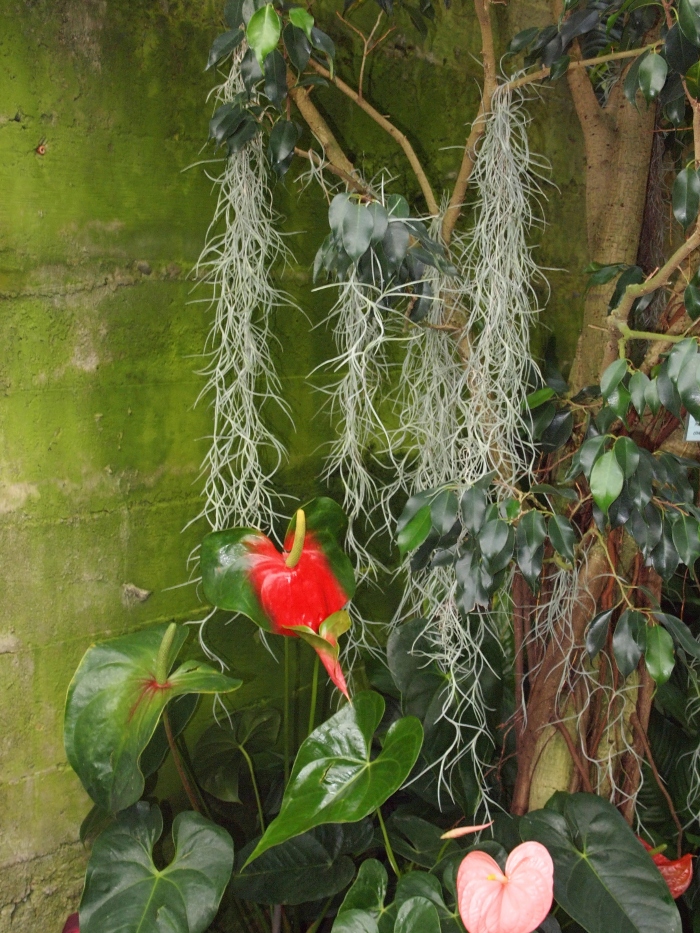 Appearing in England towards the end of the Industrial Revolution, greenhouses were an architectural representative of the Victorian Age’s zeitgeist; for greenhouses were not only the material manifestation of the contemporaneous Industrial Revolution’s use of iron and glass, but they were embodied the revolutions in the fields of science, economics, and increased social mobility. During the Industrial Revolution, Great Britain had developed into the world’s premier industrial and naval power and they used their maritime prowess in search of not only empire, markets, and natural resources, but also to increase scientific understanding. Among the fruits of these so-called journeys of discovery were the many exotic plants discovered by the British in the New World, Africa, and the Pacific. Specimens collected included those by a young Charles Darwin during his voyage aboard the HMS Beagle, the ship that carried him to the Galapagos. These specimens would later inform his later theory of Natural Selection.
Appearing in England towards the end of the Industrial Revolution, greenhouses were an architectural representative of the Victorian Age’s zeitgeist; for greenhouses were not only the material manifestation of the contemporaneous Industrial Revolution’s use of iron and glass, but they were embodied the revolutions in the fields of science, economics, and increased social mobility. During the Industrial Revolution, Great Britain had developed into the world’s premier industrial and naval power and they used their maritime prowess in search of not only empire, markets, and natural resources, but also to increase scientific understanding. Among the fruits of these so-called journeys of discovery were the many exotic plants discovered by the British in the New World, Africa, and the Pacific. Specimens collected included those by a young Charles Darwin during his voyage aboard the HMS Beagle, the ship that carried him to the Galapagos. These specimens would later inform his later theory of Natural Selection.
To nurture great scientific minds like Darwin’s, Great Britain created the Royal Society in the late 17th century (the world’s first and oldest scientific society), dedicated to the pursuit of furthering — and defining the methods of — scientific inquiry and scientific knowledge. The Royal Society was a strong proponent of the voyages of discovery, and provided an important forum for exchange not only of scientific ideas but also for the financing of those endeavors. Perhaps of greater impact, was the Society’s fostering amongst the general public an appetite and support for learning more about the natural world. Once collected, though, the questions turned to where to house these specimens to ensure they would continue to thrive, studied by science, and also shared with the public who financed the endeavors? How could one recreate the environment from which the specimens came? How does one provide habitat for a bird of paradise (the plant, pictured here and on view at the VPC) native to South Africa, in the climate of an island in the North Atlantic (or the climate of Capitol Hill)? By a new type of building made possible by the fruits of industrialization, the greenhouse. The almost exact type of greenhouse we have in Volunteer Park.
The Pioneering Architectural Characteristics of the Greenhouse
Iron and glass – the two characteristic components of the VPC and its Victorian predecessors — existed prior to the Industrial Revolution. The Iron Age pre-dates much of recorded history and glass was present in ecclesiastical buildings and homes of the nobility starting in the Middle Ages. The industrialization that began in Great Britain in the 18th century, however, made glass and iron available in greater quantities and at lower cost. Although their industrial uses (especially that of iron), were well established when greenhouses emerged, their previous deployment was primarily in bridges and machines, not in buildings. Iron’s leading characteristics that made it ideal in the construction of greenhouses (and, later, many other building types) is its great strength and ability to be cast with precision. Also key for its early choice in greenhouse construction is iron’s resistance to rusting (important in a high humidity environment, like a greenhouse). These qualities made it well suited for use in the greenhouse, allowing the greenhouse to be made from many simple, repeatable and modular parts, keeping the cost down and the erection simple. The modular benefits of iron construction and its use in greenhouses in turn created a demand for glass to follow many of the same manufacturing rules that its supporting iron structure took: repetitive, modular pieces that made installation quick, efficient, and economical.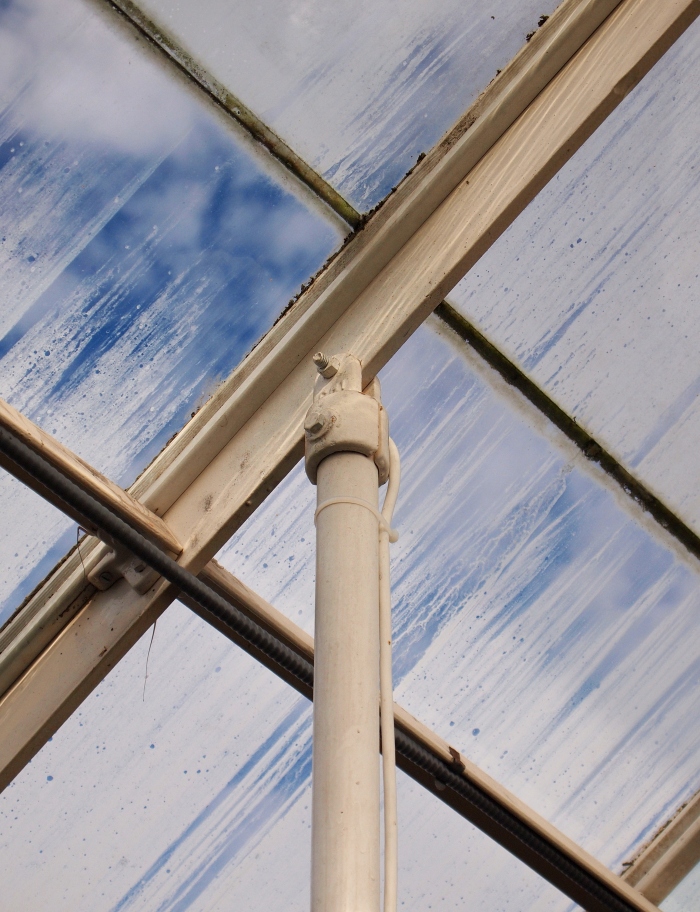
In the Volunteer Park Conservatory, one can see first-hand the same precision, modular parts that made up the first 19th century greenhouses. Such precision parts form the backbone of almost all modern manufactured products, and appeared first in the architecture of the greenhouse. With their slenderer, long spanning iron structure, greenhouses allowed for a previously unimaginable amounts of glass in a building, with a building’s enclosure for the first time being dominated by glass (a non-structural element), rather than being dominated structure. This distinction between structure and enclosure, as well as massive amounts of glazing are the cornerstone traits of modern architecture. A building dominated by glass was, or course, perfectly suited for providing habitat for a host of tropical and other exotics plants, first in England, and then the rest of the world, including Volunteer Park. In addition to its obvious property of allowing for daylight to enter and promote photosynthesis, glass also has another key characteristic -– it traps the infrared radiation in sunlight, warming the ai
r temperature within the greenhouse. This phenomena occurs because the incident wavelength of solar radiation is such that it passes through glass, but the reflected radiation is of a different wavelength and is unable to pass back through the glass, resulting in a concentration of infrared radiation and a warmer environment (sometimes getting too warm, as noted by the white washing of the glass of the VPC during the summer months).
The Resulting Culture that Flowered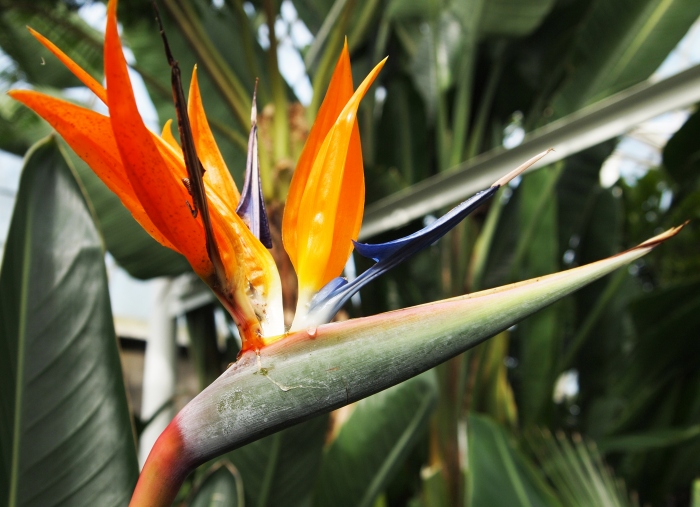 Built cultural spaces, as we understand them today, were far fewer in the 19th century than they are today even if one accounts for a smaller population. The rising middle class (another result of the Industrial Revolution) with its growing leisure time and population created a new demand on places to pursue leisure time. Prior to the Industrial Revolution, leisure time was primarily enjoyed only by the wealthy that had the time and the means to build large private residences on large estates, both with sufficient space to house their interests and their leisure time pursuits in the arts and sciences. The earliest greenhouses were, in fact, on private estates.
Built cultural spaces, as we understand them today, were far fewer in the 19th century than they are today even if one accounts for a smaller population. The rising middle class (another result of the Industrial Revolution) with its growing leisure time and population created a new demand on places to pursue leisure time. Prior to the Industrial Revolution, leisure time was primarily enjoyed only by the wealthy that had the time and the means to build large private residences on large estates, both with sufficient space to house their interests and their leisure time pursuits in the arts and sciences. The earliest greenhouses were, in fact, on private estates.
Concurrent to the Industrial Revolution and the rise of the middle class and the subsequent demand for public places of leisure, the mid-19th century also marked the emergence of nationalism, and the concerted efforts of peaceful means of self-promotion between nations. One such means for self-promotion was the world’s fair or exposition. These events were the largest social events a nation could, or ever hosted, with millions of visitors in attendance, providing a venue for nations to broadcast their technological and scientific prowess to the world. The Eiffel Tower (1899) is testament to the ambitions structures realized in the age of the world’s fairs (as is Seattle’s own Seattle Center). These fairs, interestingly enough, became their own means to an end. Staging one required a tremendous investment of resources and ingenuity, not the least of which was to create structures to house the various exhibits and the massive crowds that were part and parcel to the event. What was needed for this new type of cultural space that could house the masses was an economical, quickly assembled structure, as were conceived of and executed quite quickly, and the architectural model provided greenhouse was the perfect model for this new type of space. Enclosed in glass, these world’s fairs buildings displayed the technological marvel in a brightly lit and voluminous space, and these iron and glass structures forever change architecture. The watershed event and building (the re-purposed greenhouse) was the construction of the Crystal Palace for the Great Exhibition of 1851, in Hyde Park, London. Based upon technologies pioneered by greenhouses, the Crystal Palace was a massive building even by today’s standards, and enclosed almost 1 million square feet and over a quarter mile in length, and is credited by most as the first building of the modern movement. It was also the first large scale and public cultural monument. And it was conceived and designed by a famous gardener turned architect/engineer – Joseph Paxton — who knew that the greenhouses that he had designed and built presented the perfect technological solution (albeit, on a much larger scale).
An interesting connection exists between the Crystal Palace and the VPC in addition to their shared greenhouse typology –- the VPC was among the first cultural buildings in Seattle (built in 1912), being built and founded prior to the Seattle Art Museum, the Frye Art Museum, or the Paramount Theatre. On a decidedly more modest scale than these Seattle cultural venues, the VPC still fulfills its pioneering cultural and educational callings with verve. With an impressive array of plants, we should all support the Conservatory so that it can continue its mission to educate its visitors to a variety of botanical treasures from all corners of the globe. With both intimate and grand spaces for viewing their collection, as well as informative exhibits, the VPC is part of remarkable scientific and cultural legacy that gave birth to not only modern architecture, but to the modern cultural building.
Recent CHS Schemata Posts
John Feit is an architect on Capitol Hill, and works at Schemata Workshop. He blogs frequently on design and urbanism, with a focus on how they relate to and affect the Capitol Hill community.



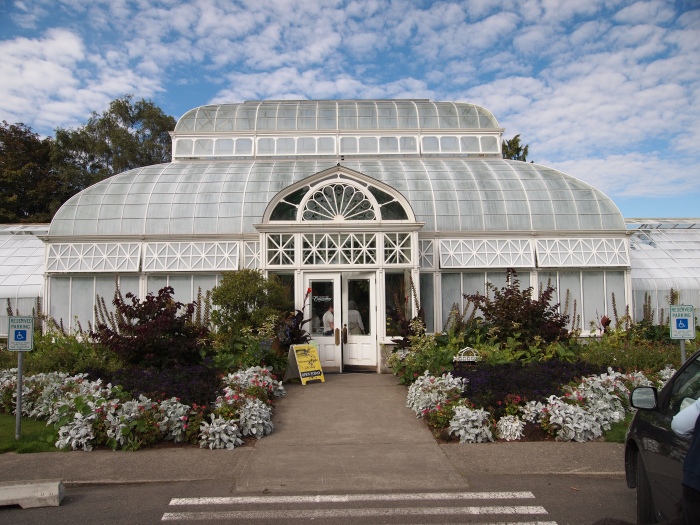
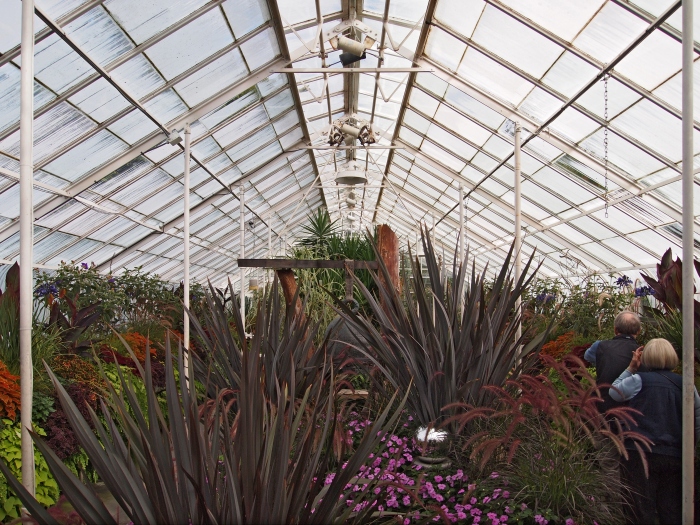


Thank you for another well-researched and wonderful article. It’s a great way to start a Sunday!
A great piece on a great place. Does anyone know what us average citizens can do to support preservation of the Conservatory?
Anyone interested in more information or would like to help can go to: http://www.volunteerparkconservatory.org We need help both with raising money for the completion of the final phase of restoration and also with keeping the City Gov + Park Department on board with funding the day to day operations.
Thank you!
Its f-ing pathetic we’re even having this discussion. A great example of how our society and city is regressing backward.
We don’t value our history as a city.
This is madness.
There’s a good article out today about how Amazon has been a no show in contributing to non profits in Seattle even though they are sitting on $5 billion in cash and earn $1,500 a minute. This would be a great opportunity for them to step up especially since so many of their employees are moving to the area these days.
Please allow me to clarify. Its sick and pathetic a city as wealthy as Seattle refuses to fund its public schools, the University of Washington, our transportation system, or our legacy parks. This is another sign of the downfall of our society.
Instead, we outta be initiating a new and expanded system of Olmsted-like parks and boulevard system. Hell, we could even link it into our bicycle master plan (which is also unfunded).
But I guess that’s just to goddamnmed much to ask.
Good luck with that – Jeff Bezos is a libertarian nut job who has made tax dodging a core part of Amazon’s corporate strategy since Day One. Main reason this NY hedge funder chose WA as a location for Amazon was to exploit a federal tax loophole. He’s a Grade A a-hole right down to his shoes.
Unless I missed it, the ST article omitted this entirely: http://thesunbreak.com/2011/08/17/new-at-amazon-jeff-bezos-t
Anyone who lives in the neighborhood and enjoys the Conservatory as much as I do should consider joining. there are various levels of membership and it is a great cause. Even with a small admission fee I would continue to visit.
I can’t imagine our neighborhood without it!
@maura – The tax deductible “gift” is for creating a “Center for Innovation” at MOHAI – the purpose of which is to toot the horns of Amazon, Microsoft, etc. So essentially Bezos gets a personal tax write off for Amazon marketing and personal Bezos fluffing. Allow me to bust out the world’s smallest golf clap.
Or you could go to the website and make a donation rather than waiting for the government to figure out how to spend our tax dollars. That is what I did.
http://www.volunteerparkconservatory.org/support-the-conserv
Perhaps some sort of expansion could assist…. they could make the gardens more elaborate and require entrance fees or memberships sort of like fairchild tropical gardens or viscaya. Perhaps 1 garden dedicated just for wedding receptions and private parties as this brings in big money to rent . need to find investors or “funders” and allow for revenue from the garden parties and memberships to be sent directly to the private investors until the agreed upon concession period is over, or loan with interest is re-payed at which time it the revenue collection rights would be hsnded back over to the public sector, which now has a free and dramatically improved garden with the cash streams to maintain, and donate to whatever agency gov likes, even if it is themself!Lol (note: original public park owners could maintain operations during the consession period or time for loan with interest to be payed back. I am friendly with a great deal of funding companies and agencies that specialize in arranging the third party logistics and coordination for Public-Private Project Financing. Please feel free to contact me. I just graduated from the University of Miami business school. My family lives in Seattle though. Proactive measures can be taken with allowing fro the preservation and expansion of the garden, pleasing the general public, while at the same time creating a revenue generating orginization, whose funds could assist in its operating expenses and continued botanical research. feel free to contact me. my email is [email protected]
Interesting, in all the 45 years I’ve been visiting the Conservatory, it has never occurred to me to call it the “VPC”. Thanks for this wonderful article, and for suggesting a book I feel I must read.
Where are the private investors willing to make the repairs needed?
Why is a frickin’ ferris wheel on the water front more important than preserving our history?
Amazon is taking heat for not contributing back to the community – this would be a perfect project for them to donate to…
Has it been reviewed for option to use site for weddings ? Amount of $ going into weddings it’d be a great venue. A NW alternative to our worship of the greenery. The legacy of adoption of a plant or replacement of a window pane can be made w/ frosted text to mark occasion that is tied to wedding bonds.
It’d be a plan within city limits & sustainable year round w/ possible use for JoP (Justice of the Peace) wedding site.